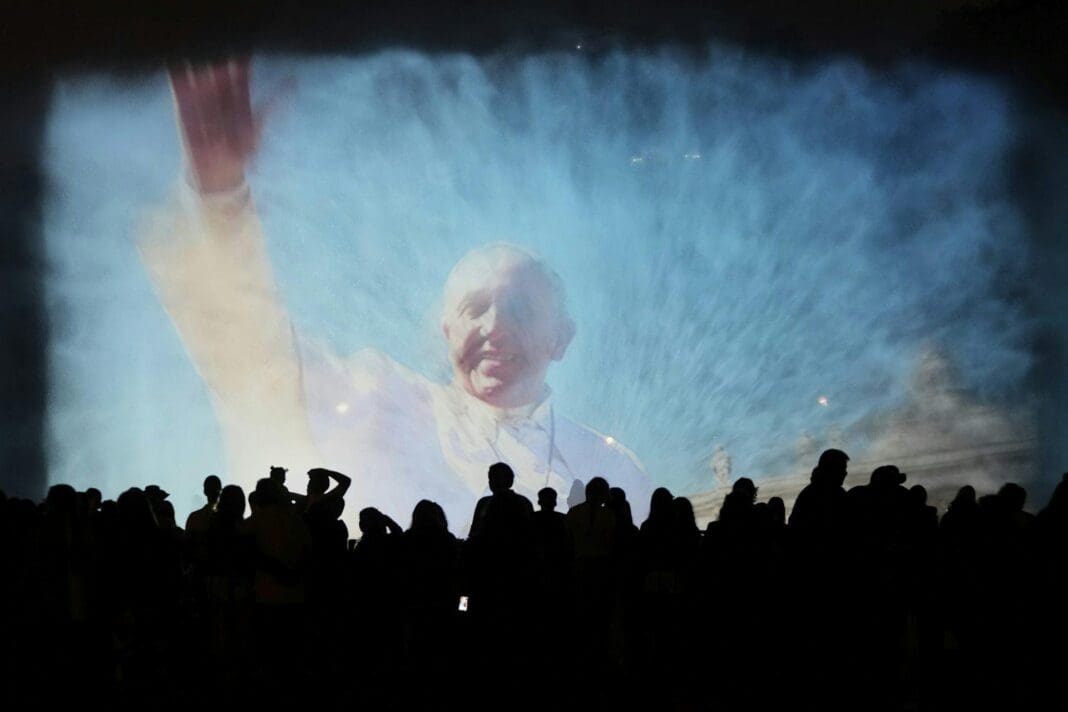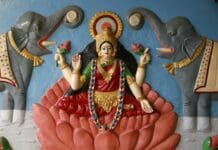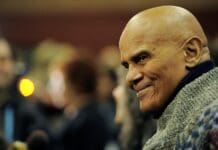Most stories about Pope Francis mention that he made history as the first pontiff from Latin America. In fact, Francis was the first pope in centuries to be born outside Europe. But what impact did that actually have on the Catholic Church? The Conversation U.S. asked Neomi De Anda, a theologian at the University of Dayton, to explain the significance of having a pope from the Southern Hemisphere.
Where do you see the influence of Pope Francis’ Latin American background?
In reality, Francis is not only the first Latin American pope; he’s the first American pope. Francis is Argentine, the child and grandchild of Italian immigrants, and the first to be born in “América.” Though geography divides it into two continents, North and South, it is one land – one many Indigenous communities call while “Turtle Island” or “Abya Yala.”
In the pope’s 2024 video message to the Academy of Catholic Hispanic Theologians of the United States, he called upon them “to be bridge-builders between the Americas” and to be a church that “welcomes, accompanies, and integrates” migrants. Speaking in Spanish, he invited the academy “to do theology with your head, your hearts, and your hands” and to integrate “the richness of both cultures, North and South, at the service of a dignified life.”
This message emphasizes Francis’ view of “synodality” – meaning a church that walks together – and his understanding of the connection among all people in the Americas and the Caribbean. It also shows a recurring theme of his papacy: the connections between pastoral care and theology.
The greeting also highlights his desire for all to have a life of well-being, or “buen vivir,” through God’s love. As Jesus says in the Gospel of John, “I came so that they may have life and have it more abundantly.” This is also a key theme in a 2007 document produced after a meeting of Latin American bishops, known as Aparecida. Francis, then a cardinal, was a primary drafter.
Aparecida points out Latin America’s abundance of aquifers and forest lands, which are “humanity’s lungs.” It laments economic factors leading to environmental destruction and climate change – themes that would prove important to Francis’ papacy. The document stresses God’s care for people whose lands are being pillaged and who are forced to migrate. It claims “nothing and no one” can take away the strength, joy and peace God gives to the world’s most vulnerable.
Francis repeatedly acknowledged the Catholic Church’s role in crimes against Indigenous people, and he apologized. How did ideas about colonialism shape his papacy?
Francis spent much time and attention learning more about the experiences of Native communities: from his visit to Chiapas, Mexico, in 2016; to the Amazon Synod, a meeting of Catholic bishops from the Pan-Amazon Region, Indigenous leaders from this region, theologians and other subject matter experts in 2019; to his tour across Canada in 2022.
After the synod, Francis released a letter titled Querida Amazonia, which includes a call for Catholic leaders to learn more about the lives of Native peoples from across the nine countries of the Amazon.
During the papal Mass Francis celebrated in Chiapas, Mexico, in 2016, you can see the deep intermixing of local cultures and customs with the liturgy. For example, women spread incense across the altar using clay vessels, alongside deacons using a thurible, the metal burner typically used in services. Animal images at the front of the platform represented the integration of all of creation.
Throughout his trip to Canada in 2022 – whose purpose, in part, was to apologize for the Catholic Church’s role in the Indigenous boarding school system – Francis presented a disposition of listening and care. He spent more time meeting with people and hearing about their experiences than giving prepared speeches on the perspective of the church.
For First Nations peoples, the pope’s visit was an opportunity for reconciliation – but for some, it also reopened old wounds. One of their requests was that the church reject the Doctrine of Discovery: ideas about conversion to Christianity that colonial powers used to justify abuses.
Talking to reporters on the plane returning to Rome, Francis named what had been done to Indigenous children in boarding schools as “genocide.” The following year, the Vatican released a repudiation of the Doctrine of Discovery and documents associated with those ideas.
Are there other ways that the pope did – or didn’t – make the church feel more inclusive?
Francis’ papacy did less to change teachings on another topic shaped by colonialism: gender, sexuality and women. The Catholic Church maintains that there are two genders – male and female – which complement each other, a binary system that replaced more flexible ways of thinking about gender in some cultures.
The question of whether to ordain women as deacons arose from the Amazon Synod and continued at the church’s global Synod on Synodality, but without resolution.
An emphasis on women’s role as child-bearers is embedded in the theological understanding of Mary as mother of Christ and the mother of the church. Whether intentionally or not, however, I would argue Francis laid groundwork for teaching about women and gender to expand.
Appointments of women to high Vatican positions point to small shifts in practice. The presence of trans people among the last people who paid respects to Francis at his funeral marks a sign of possibilities that hopefully will continue.
Although of “the church” might make us think of clergy, all who are baptized are the church. Around the world, Catholic communities have developed in many ways, with multiple forms of leadership – especially women lay leaders. The Vatican needs to continue to affirm that reality.
The Catholic Church understands diversity as a gift of the Holy Spirit. My hope is for someone to continue in Francis’ vein of appreciating that pluralism.
This article is republished from The Conversation, a nonprofit, independent news organization bringing you facts and trustworthy analysis to help you make sense of our complex world. It was written by: Neomi De Anda, University of Dayton
Read more: Francis, a pope of many firsts: 5 essential reads What will happen at the funeral of Pope Francis How the next pope will be elected – what goes on at the conclave
Neomi De Anda consults for the Louisville Institute, funded by Lily Endowment Inc. She receives funding from the Wabash Center for Teaching and Learning in Religion and Theology. She is a past president of the Academy of Catholic Hispanic Theologians of the United States and is affiliated with the Marianist Social Justice Collaborative. 













